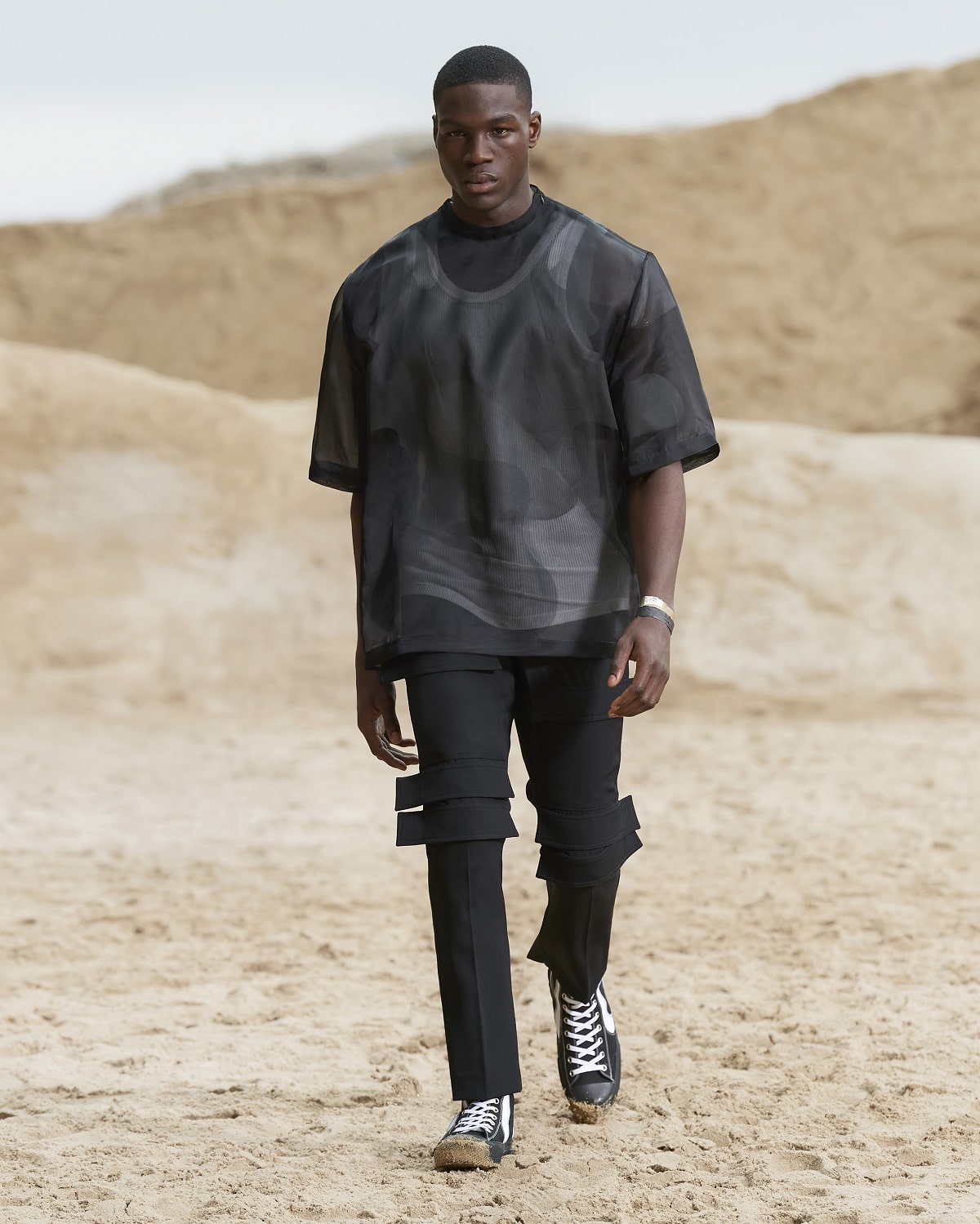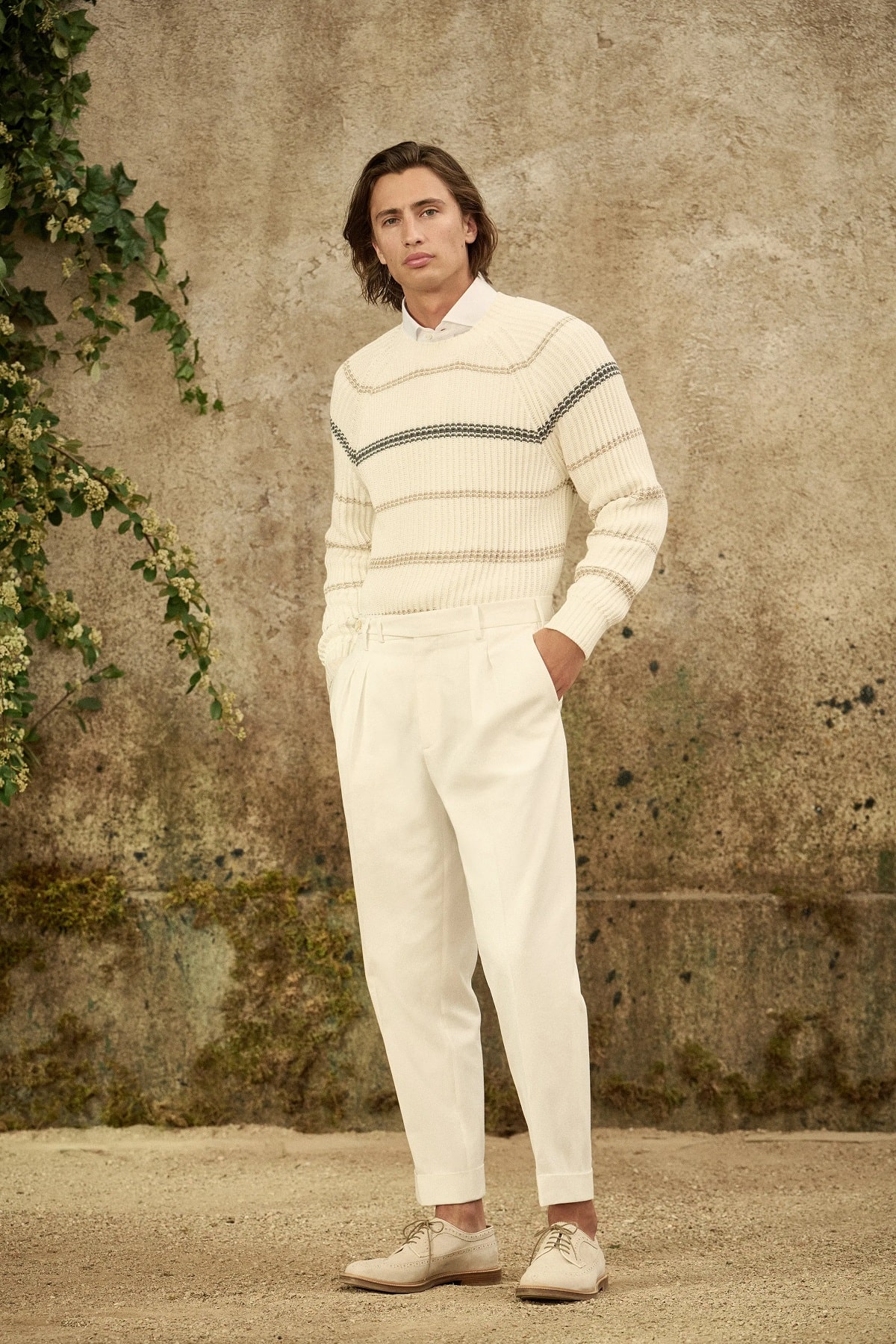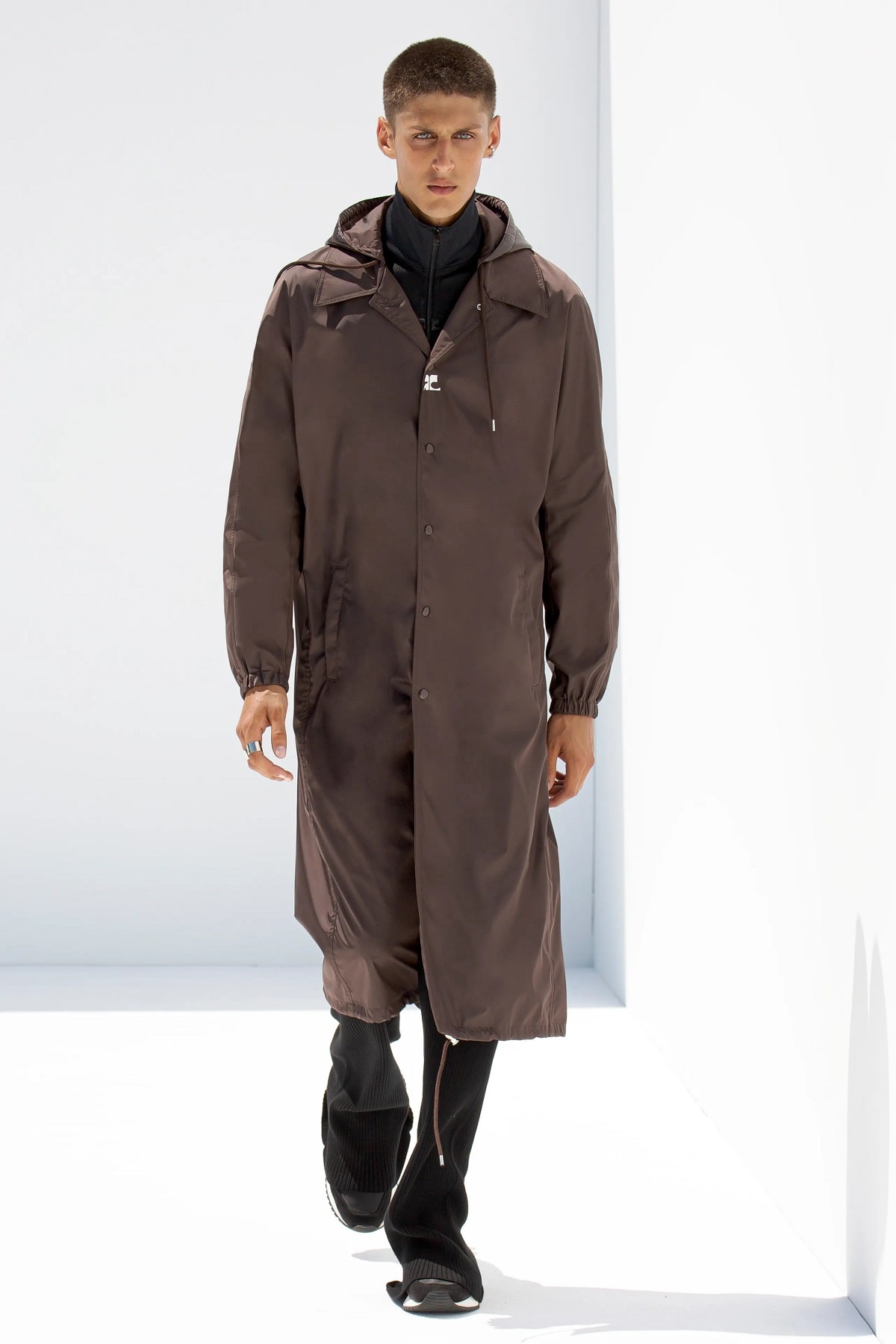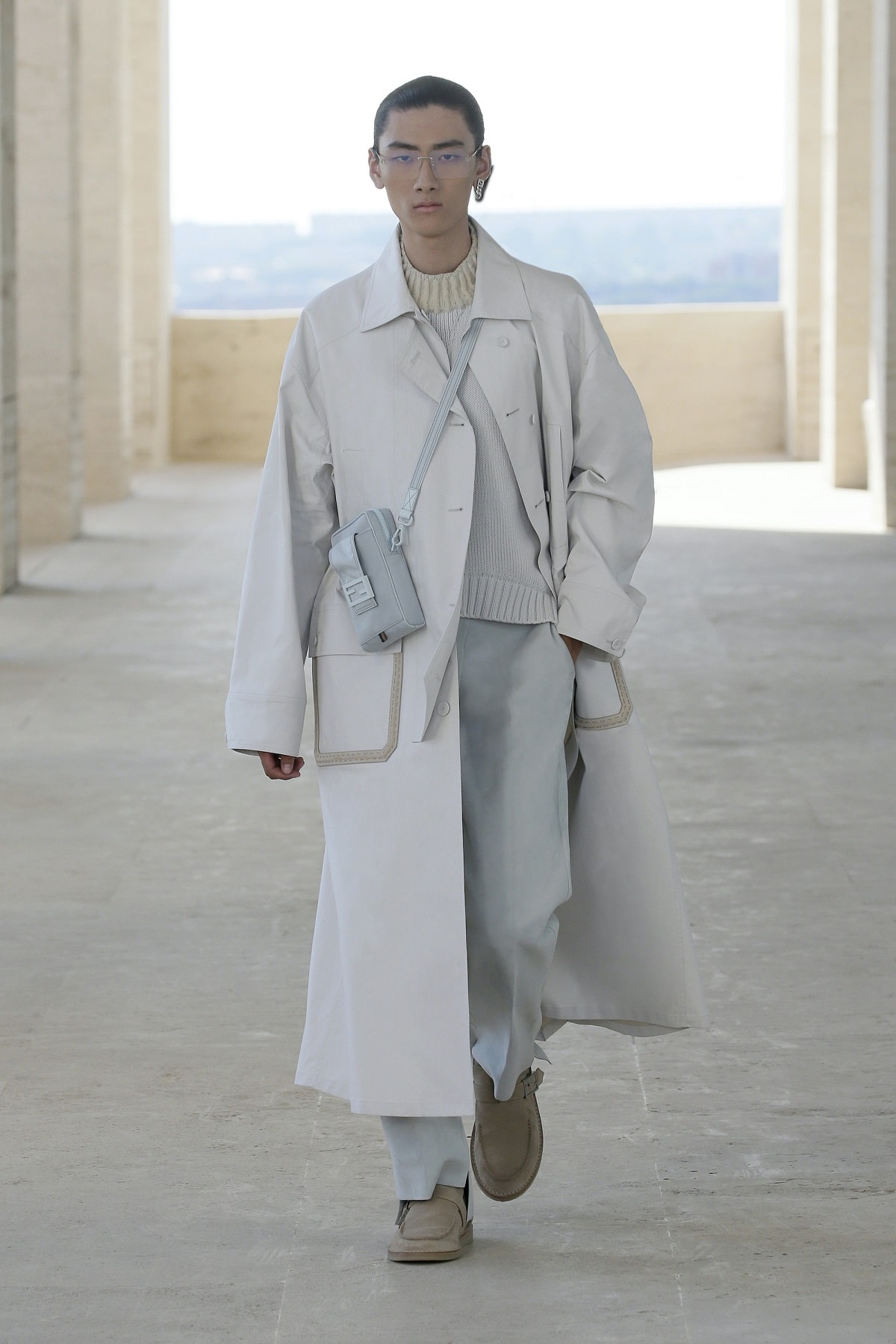1
HOME > Tips & Advice >
WHEN LUXURY MENSWEAR IS WORTH IT
Written by Ivan Yaskey in Tips & Advice on the 13th May 2022

It’s common life advice: You get what you pay for. The sentiment is meant to steer you away from making cheap, shoddily made purchases, whether for a car, clothing, or furniture: That price tag might seem like a steal now, but in a few months to a year, you might be singing a different tune, based on degree of wear and damage. This advice frames the argument around classic menswear: Invest in something timeless and constructed well, and it’ll give you a decade, if not more, of wear. Yet, classic isn’t synonymous with luxury, although the two frequently get conflated. “Luxury,” at least by current standards, encompasses high-end brands that define how we perceive trends, elevated streetwear, and exclusive collections. Prices between something emblematic of 2022 and reflective of no particular place or time don’t differ significantly. Return, however, will in a few years’ time.
As this debate continues, another factor has emerged: Rising prices for luxury goods due to increasing inflation rates seen over the course of 2022. In fact, you might say, what you pay for luxury clothing, footwear, and accessories has outpaced the jump in gas and food simply due to status and exclusivity. Beyond brand recognition, luxury goods further symbolise excess and “because you can” finances. Considering this development, is luxury fashion worth it – and if, so when? Why invest in a die-hard, expensive-for-expensive sake brand when something slightly lower-tier and still decent quality might suffice?

What’s Behind a Luxury Brand?
Visually, you might not see a significant difference between luxury and fast (and in many cases now, ultra-fast) fashion, especially when you’re looking at a photo online. Yet, if a picture says a thousand words, trying on a garment or accessory confirms the price point – and that’s even before you wear it and wash it a few times, and the cheaper item starts to show signs of wear, from fading or small holes to seams that need to be stitched. Considering this, the mathematical aspect seems logical, if not financially pragmatic: Calculate how often you intend to use or wear an item, and divide that by the total price of what you’re paying for a good and any long-term maintenance. While this formula unfortunately justifies the wear-twice approach many now take with fast fashion, it offers more quantifiable insights into a luxury purchase – assuming you’re not buying it to flip for a profit or to follow a particular trend with a definite end. While quality and longevity are the selling points behind luxury fashion, greater transparency and awareness expand upon this:
Craftsmanship: In many cases, this is the brand’s story. H&M and Shein don’t offer this, nor does something from J.Crew or River Island.
Materials: You’re less likely to run into polyester, acrylic, and thin cotton that last, at most, a few years before showing their wear. Rather, luxury tends to buy you sturdier leather, 100-percent wool, cashmere, or combed pima or supima cotton. While not absolute, the lack of synthetics means something less taxing on the environment.
Exclusivity: We’re not talking about limited-edition collaborations. Instead, luxury goods by default tend to be produced in smaller quantities, even for something seemingly classic. As well, quality tends to be prioritised more for this small-batch approach.
Manufacturing: While the global supply chain is an increasingly complex network, there’s a stronger – although not absolute – chance that what you’re purchasing was made somewhere in Europe, where workers are paid higher wages and conduct their jobs in safer conditions and environmental regulations are more likely to be enforced.
Considering these factors, a study from Datafiniti examining 25,000 prices for pieces from nearly 380 brands found that luxury goods can cost anywhere from double to 37 times standard-quality and value garments. The Fashion Square offers a range of high-end brands for individuals who want to experience luxury fashion up close. This is a great way to learn about the craftsmanship, materials, and exclusivity that set luxury pieces apart from fast fashion.

When to Invest in Luxury Menswear
Based on all points touched on so far, luxury tends to be ideal for garments and accessories you intend to wear long term and multiple times:
Suits: This is the quintessential investment piece for a reason. We know what off-the-rack, untailored suits feel and look like. We know how cheap polyester comes across. When you want to move as far away from this intersection as possible, investing in something 100-percent cotton or wool adds the substance you seek and is likely to last longer – and through every trend. Factors like lining play another role, as does the fit and appearance of tailoring.
Coats: Once autumn is in full swing, you know what to reach for. Especially if you live in a part of the world where the temperature hovers around freezing for a solid four months out of the year, you want something reliably warm that matches most of what you own. A wool overcoat, more so than a parka or puffer, tends to fill this void and be worth the expense put into it.
Footwear: Strictly speaking about dress shoes and boots, cheap construction shows wear sooner, be it creasing or fading. Shoes, of course, require upkeep, but solid construction – quality leather or a more sustainable alternative, with Goodyear welting – establishes a firmer foundation that’s ready for repeat wear.
Bags and luggage: Never approach a vacation or business trip wondering how you’ll transport your clothing and the rest of your stuff. Generally, a larger leather or cotton duck bag lasts trip after trip while keeping your belongings relatively secure.

What Not to Invest In
Not all high prices translate to quality or longevity. Instead:
Don’t just buy the brand: Realise that licensed goods strictly for brand recognition tend to be lower quality. A T-shirt with a higher-end brand’s logo likely won’t give you the durability you seek. As well, understand that this trend fades out immediately when that period of logomania passes. As an alternative, look for more classic silhouettes, and do your research into how a brand manufactures its garments and where it sources its materials, if you’re fully invested in construction.
Avoid the hype: Limited-edition collections might deliver the flash, but they’re truly only collector’s pieces. Similar to collecting watches, these garments might net you a profit if you flip and the collaboration or collection is in demand, or you might end up with either a loss or a style that clearly appears out of date.
Don’t assume quality is universal: A 2018 study from the University of Leeds tested the durability of denim and T-shirts from luxury to fast-fashion brands, examining seam strength, colour retention, and the garment’s resistance to wear and tear. Surprisingly in this regards, jeans and T-shirts from fast-fashion retailers lasted as much as 10 times longer than similar designer offerings.


Trending
2
3
4
5
6
7
8
9
10










